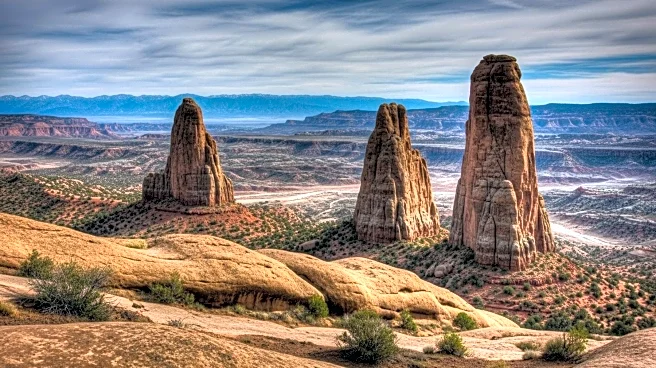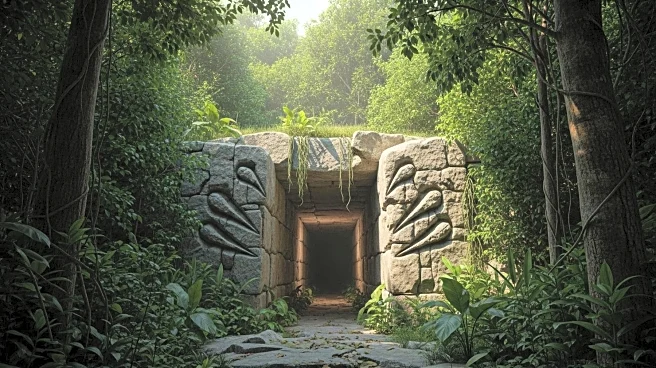What's Happening?
Recent studies suggest that the extinction of dinosaurs 66 million years ago led to significant changes in Earth's landscapes. Researchers, including Luke Weaver from the University of Michigan, have examined geological formations in North America, noting differences before and after the Cretaceous-Paleogene extinction event. Dinosaurs, acting as ecosystem engineers, influenced vegetation and river patterns by trampling and grazing, preventing plant establishment. Their disappearance allowed tree roots to stabilize sediment, altering river courses and creating new geological formations. This hypothesis challenges previous beliefs that changes were solely due to the asteroid impact that caused the extinction.
Why It's Important?
Understanding the role of dinosaurs as ecosystem engineers provides insight into how large animals can shape environments. This research highlights the interconnectedness of biological and geological processes, offering parallels to human impact on landscapes today. The findings could influence conservation strategies by emphasizing the importance of large herbivores in maintaining ecological balance. Additionally, it may prompt further studies on the long-term effects of species extinction on ecosystems, potentially guiding future environmental policies.
What's Next?
Further research is needed to confirm the hypothesis, possibly using isotopic data from fossil leaves to analyze changes in forest structure post-extinction. Scientists may explore similar impacts in other regions to validate the theory. The study could lead to broader investigations into the ecological roles of extinct species and their influence on current biodiversity. Collaboration between paleontologists and ecologists might enhance understanding of historical ecosystem dynamics and inform modern conservation efforts.
Beyond the Headlines
The study raises questions about the ethical implications of human-induced extinctions and their potential to alter landscapes irreversibly. It underscores the importance of preserving biodiversity to maintain ecological functions. The research also invites reflection on the cultural significance of dinosaurs and their enduring impact on scientific inquiry and public imagination.











